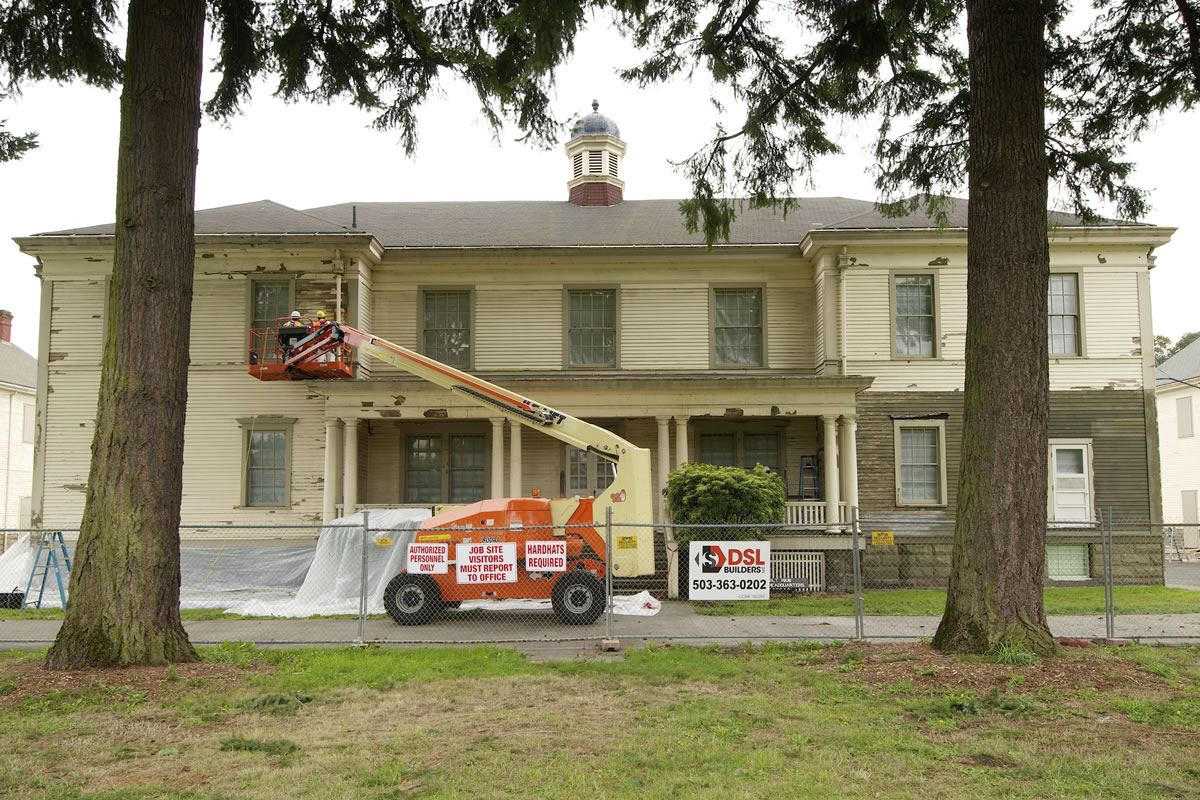Although 21,000 Park Service employees have been idled, the shutdown isn’t impacting the preservation work, said Gordon Guenther, the project’s general superintendent.
Funding for the $275,000 project was approved months ago, Guenther said.
Constructed in 1906, the two-story building faces Officers Row and is adjacent to the Parade Ground. An officer only had to walk down the front steps to drill his troops. An archive photograph shows a cone-shaped device set up just in front of the entry to the headquarters building.
“It is a large megaphone, used to help amplify the officers’ drill commands,” said Greg Shine, chief ranger and historian at Fort Vancouver National Historic Site.
Seismic upgrades
The structure is getting a bottom-to-top makeover. The reroofing work includes seismic upgrades for the roof and its distinctive cupola.
Work on the building actually started this summer, when the Park Service maintenance staff removed masonry blocks on the northwest corner of the building’s exterior. The masonry had been added about 50 years ago, possibly to support military communications equipment.
But the masonry reinforcement allowed moisture to intrude into the structure, which is known officially as Building 991.
And that moisture was causing the wooden walls to decay, Alex Patterson, chief of maintenance at Fort Vancouver, said.
“Removing the masonry block also restores the building to its historical look,” Patterson said a few days ago, before the shutdown.
The painting portion of the project includes dealing safely with lead-based paint that was applied to the building years ago.
As part of the painting project, Park Service cultural resource specialists took paint samples from several historic buildings within the East and South Barracks. Laboratory analysis showed color changes over the years.
The work being done is for preservation, and won’t be a factor in whatever future role the building might have as a National Park Service facility, Patterson said.
It is the first of several preservation projects on 16 historic buildings transferred to the Park Service by the U.S. Army in 2012.




